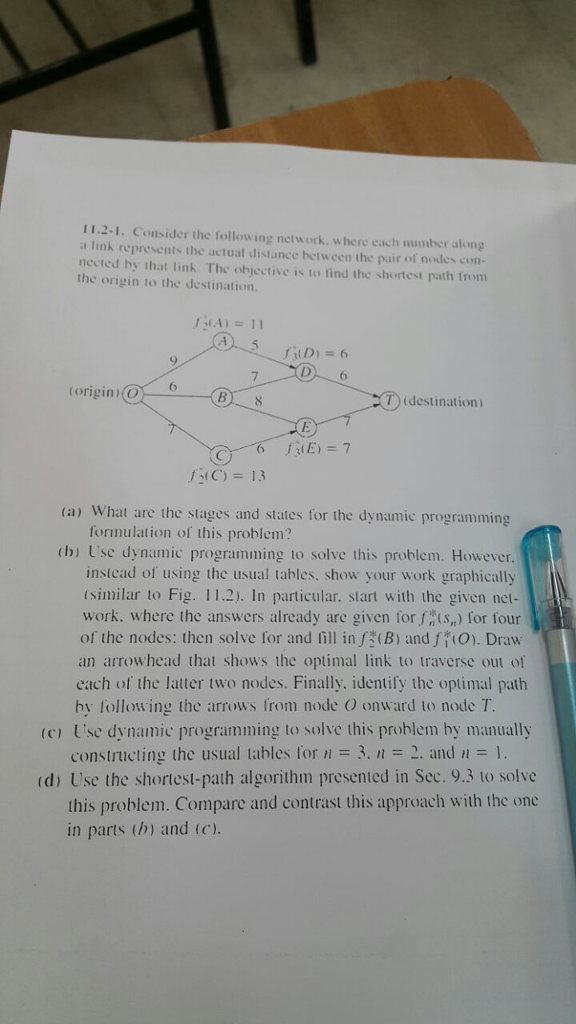
Consider the following network, where each number along a link represents the actual distance between the pair of nodes connected by that link. The objective is to find the shortest path from the origin to the destination. a) What are the stages and slates for the dynamic programming formulation of this problem? (b) Use dynamic programming to solve this problem. However, instead of using the usual tables, show your work graphically (similar lo Fig. 11.2). In particular, start with the given network, where the answers already are given for f_n* (S_n) for four of the nodes: then solve for and fill in f_2*(B) and f_1*(O). Draw an arrowhead that shows the optimal link 10 traverse out of each of the latter two nodes. Finally, identify the optimal path by following the arrows from node O onward to node T. (e) Use dynamic programming to solve this problem by manually constructing the usual tables for n = 3, n = 2, and n = 1. (d) Use the shortest-path algorithm presented in Sec. 9.3 to solve this problem. Compare and contrast this approach with the one in parts (b) and (c) Consider the following network, where each number along a link represents the actual distance between the pair of nodes connected by that link. The objective is to find the shortest path from the origin to the destination. a) What are the stages and slates for the dynamic programming formulation of this problem? (b) Use dynamic programming to solve this problem. However, instead of using the usual tables, show your work graphically (similar lo Fig. 11.2). In particular, start with the given network, where the answers already are given for f_n* (S_n) for four of the nodes: then solve for and fill in f_2*(B) and f_1*(O). Draw an arrowhead that shows the optimal link 10 traverse out of each of the latter two nodes. Finally, identify the optimal path by following the arrows from node O onward to node T. (e) Use dynamic programming to solve this problem by manually constructing the usual tables for n = 3, n = 2, and n = 1. (d) Use the shortest-path algorithm presented in Sec. 9.3 to solve this problem. Compare and contrast this approach with the one in parts (b) and (c)







